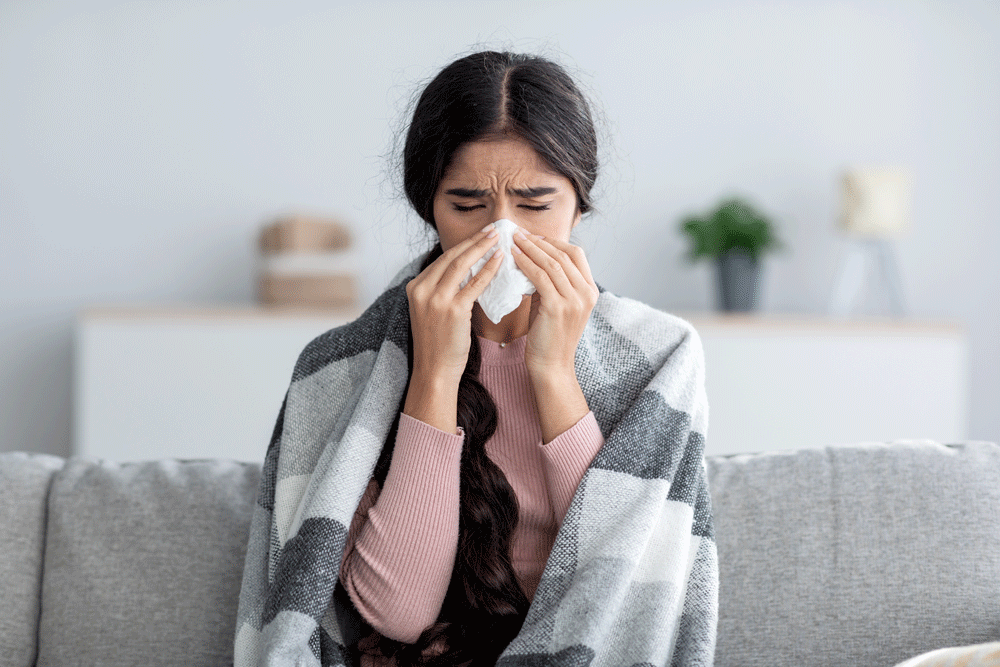
Flu season is coming early – is your workplace ready?
This year’s flu season is expected to start earlier and be more severe, but there are several actions employers can take to help keep workers healthy.
Health experts warn that a more severe flu variant is set to wreak havoc this year, with infections circulating up to five weeks earlier than normal.
With this year’s virus also set to cause more serious illness, employers need to take action now to protect employee health and maintain business performance.
Our medical director, Dr Bernard Yew, shares five practical ways employers can reduce infection risk and minimise sickness absence this challenging season. Read on to get the tips.
Five ways to safeguard workers from this year’s flu wave
1. Promote hand hygiene
It sounds basic, but regular handwashing with soap and water can significantly help prevent flu by removing bacteria and viruses picked up from door handles and other surfaces.
Make sure employees are made aware of the current flu risk and that soap dispensers and hand sanitisers, many of which have sat empty since the pandemic, are refilled.
Remind employees to wash their hands before they eat or carry a pocket hand sanitizer if they’re working offsite or attending meetings where it might be more difficult to handwash.
Also remind employees not to touch their mouth, nose or eyes, unless their hands are clean, because of the increased risk of spreading the infection to themselves.
2. Minimise disruption
One of the biggest threats to business continuity during flu season is the rapid spread of illness, with a single case quickly escalating into multiple absences.
This year’s flu variant is particularly infectious, with an R number of 1.4. This means that if 100 people are infected, they will pass it on to 140 people, compared to 120 in a typical year.
It’s therefore vital to encourage employees to take sensible precautions if they’re feeling unwell, such as working from home or wearing a mask in shared spaces.
Simple measures, like ensuring good ventilation, avoiding crowded meetings and maintaining distance when symptoms appear can significantly reduce the risk of further transmission.
3. Support vaccination
The latest figures show that less than a third (29%) of adults with a long-term health condition have had their free flu vaccine, so encourage everyone eligible to get this.
If you don’t yet offer corporate flu vaccinations, consider collecting absence data related to flu this year to help make the business case for next year.
For example, if a company employing 1,000 people has 3.5% off with flu for at least four days (as anticipated) that’s 1,000 x 0.035 x 4 = 140 lost days.
Assuming an average wage of £150 per day, that’s a direct cost of £21,000, compared to around £12,000 to vaccinate everyone.
4. Boost wellbeing
Although not as protective as vaccination, boosting wellbeing can also reduce the risk of employees catching flu and their ability to fight off the infection if they do.
Encourage everyone to get enough rest and increase fruit, vegetable and protein intake, including immunity-boosting foods, such as citrus fruits rich in vitamins C, D and Zinc.
If employees are worried about the cost of eating more healthily, provide information on using tinned, dried or frozen foods which are more affordable and convenient.
The Department of Health also recommends taking Vitamin D during the Autumn and Winter, when sunlight isn’t sufficient for natural absorption.
5. Consider vulnerable workers
Individuals with lung conditions, such as asthma and COPD are particularly vulnerable, so make sure they can take time off work to get vaccinated if needed.
If there’s a severe outbreak of flu across your business, consider allowing individuals to work from home temporarily, or encourage them to wear a mask in crowded or high-risk settings.
If you have a day-one sickness absence service, nurses can provide advice on managing symptoms and recovery when employees first report illness.
For example, they may suggest monitoring oxygen levels with an oxypulse monitor or contacting 111 if symptoms worsen or chest infections develop.
The biggest risk is exposure from sick colleagues who feel like they must come in, so make sure everyone has someone to hand over work to if they come down with flu.
Dr Bernard Yew is medical director for PAM Group
How can PAM Group help?
Corporate Flu Vaccination – to provide employees with timely, free access to flu vaccinations, significantly reducing their risk of developing the virus
Day-One Absence Management – to capture and accurately recording absence data while providing employees with immediate support to manage and recover from illness
Employee Workshops – professional and engaging wellbeing advice on topics ranging from nutrition and affordable cooking to staying active.
For more information, please email info@pamgroup.co.uk or call 01925 227 000
Related Insights
How to respond to the rise in employee drug and alcohol use
Reducing work-related illness with health surveillance
New data reveals hidden reasons employees struggle at work
Occupational health insights on keeping your people healthy and productive
Want to have our latest research, case studies and opinions
delivered straight to your inbox?





